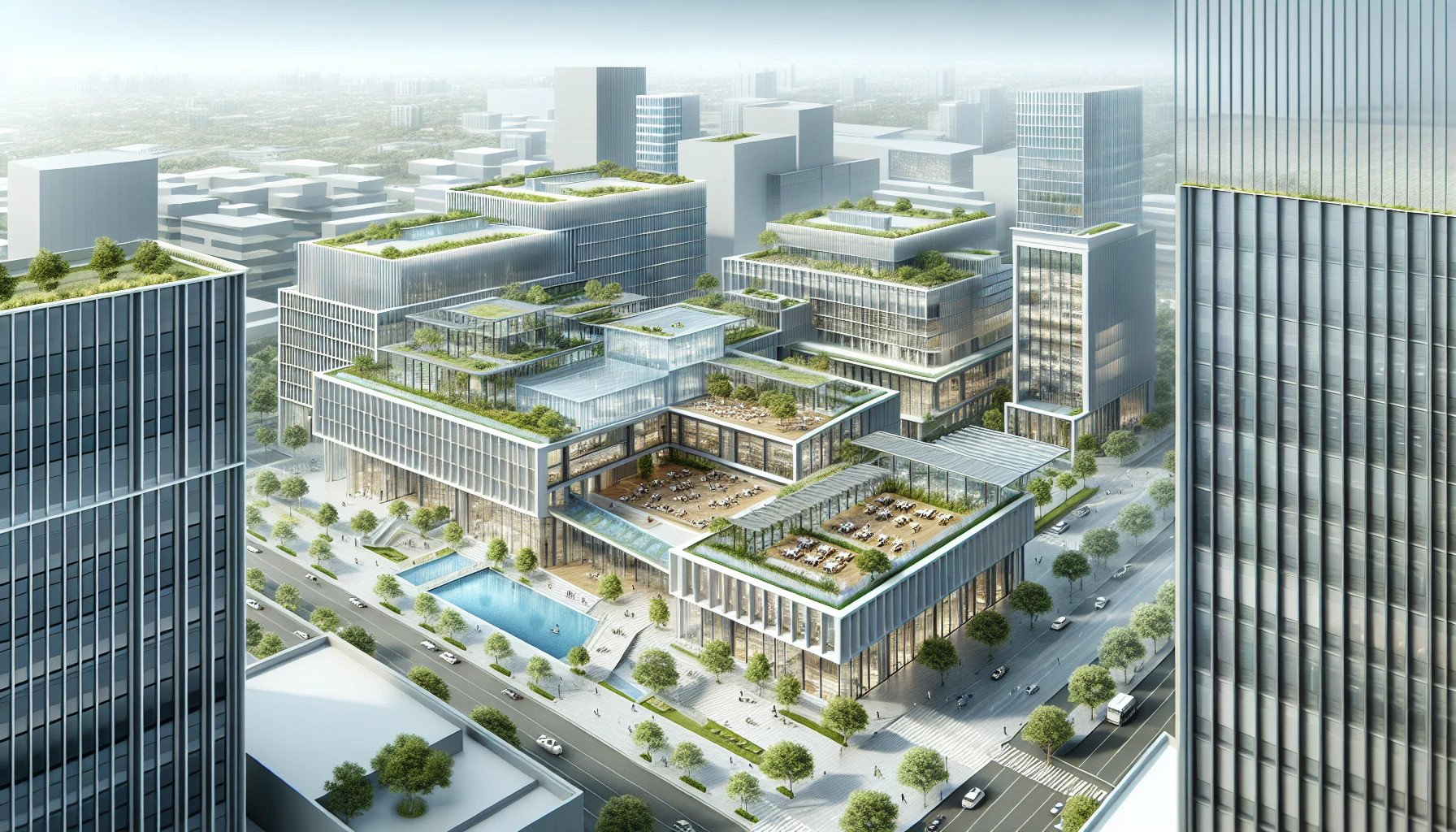Let’s Say Yay for NeuroArchitecture!
Our built spaces, the physical structures and environments we interact with daily, play a critical role in shaping our lives, affecting everything from our mental health to our productivity. With the rise of neuroscience, a deeper understanding of the human brain, and its interactions with the built environment, a new approach called NeuroArchitecture has emerged. By focusing on NeuroArchitecture, we can transform our built spaces into more human-friendly, efficient, sustainable, and resilient areas.
Not actually a ‘neuroarchitecturally designed space. :) Slightly more brutalist than I desired…we are far from AI taking over :)
What Is NeuroArchitecture?
'NeuroArchitecture' refers to an interdisciplinary approach to architectural design that integrates findings from neuroscience with architectural principles. It focuses on understanding how the built environment influences our brain and physiology, and, consequently, how our spaces can be designed to meet our cognitive and emotional needs.
Theories of NeuroArchitecture center on the idea that built spaces can directly influence our mental states and behaviors. For instance, the design of a room can either induce a feeling of relaxation or stimulate an active response. We’ve all heard of ‘Feng Shui’ - the Chinese practice of arranging objects, buildings, and space to achieve balance and harmony - and even if we thought it was some hippy stuff, there was/is some truth to how our spaces impact our well-being. The material, color, light, temperature, and spatial arrangement all interact with our neural circuits, affecting our mood, focus, and overall emotional well-being.
These theories also suggest that various features in our environment can evoke specific brain responses. Understanding these responses can help us design buildings and spaces that not only look aesthetically pleasing but also enhance mental health and well-being.
Key Principles: Firstly, it acknowledges that the environment has a tangible impact on the workings of the brain. Secondly, it underscores the idea that spatial design can promote certain behaviors and inhibit others. Lastly, it calls for the use of neuroscientific findings to make better design decisions, ultimately creating functional, beneficial, and human-centered spaces. These principles guide architects and designers in creating spaces that aren't just visually pleasing, but also cognitively and emotionally supportive.
The Love Child of Neuroscience and Architecture.
As a fledgling field, NeuroArchitecture represents a convergence between neuroscience and architecture, offering a novel way to perceive and conceptualize architectural design.
Interdisciplinary Approach: Integration of Science and Art
NeuroArchitecture stands at the intersection of science and art. By integrating neuroscience, it taps into a deep understanding of human cognition, emotion, and behavior to inform design strategies that prioritize the human experience. By blending scientific principles with the natural creativity inherent in architecture, NeuroArchitecture enhances the capacity of architecture to foster positive experiences and promote overall well-being.
Architecture Through the Lens of Neuroscience
Neuroscience provides a unique lens to understand how different aspects of architecture—like spatial organization, light exposure, color usage, and layout—affect the human brain and behavior. It also offers insights into how spaces can be designed to optimize human functioning and emotional health.
The incorporation of neuroscience into architectural design ensures that our built spaces are in harmony with our biological needs and nature, resulting in places that are not just functional but also emotionally satisfying and health-promoting.
Benefits
Implementing NeuroArchitecture in our built spaces can yield multiple benefits, enhancing mental health, productivity, and creating sustainable and resilient structures.
Enhancing Mental Health and Well-being.
NeuroArchitecture can actively promote mental health and well-being. By considering how different design elements impact our moods and cognitive processes, architects can create spaces that induce feelings of calm, happiness, or motivation, as needed. Research has shown that certain architectural and environmental features can alleviate stress, improve mood, and even assist in the management of mental health conditions like depression and anxiety.
Improving Efficiency and Productivity
Workplace design based on NeuroArchitecture principles can significantly enhance efficiency and productivity. For example, incorporating natural light and green spaces can improve focus and motivation, leading to better task performance.
Moreover, by considering acoustic and spatial design, NeuroArchitecture can help reduce distractions and foster environments conducive to concentration and collaboration. Even as we determine what the hybrid/in-person/remote work configurations will be, there is a need to ensure environments are conducive for optimal and (even) deep work.
Creating Sustainable and Resilient Built Spaces
NeuroArchitecture also promotes sustainability and resilience in built spaces. By aligning architectural design with human biology, we can create buildings that are not only energy-efficient but also better suited to withstand the challenges of climate change and urbanization. Not only resulting in healthier and more comfortable spaces for people but also contributing to the overall sustainability of our cities and communities.
Working In Concert
Architects, policymakers, and urban planners have key roles in pushing the message of NeuroArchitectural design. By incorporating neuroscientific findings into building regulations and urban planning policies, we can ensure that future built spaces are not only aesthetically pleasing but also conducive to the mental well-being and productivity of the inhabitants.As with any ‘new’ approach, research and education in this field are also required.
The Brain Is Still Mysterious
Despite its potential, NeuroArchitecture still faces several challenges. A comprehensive understanding of the brain and its interactions with the environment is still developing, and the transdisciplinary nature of the field creates challenges in integrating diverse disciplines.
However, with ongoing advancements in neuroscience and technology, new opportunities are emerging for further research and application. Future research should focus on understanding the brain-environment interaction at a deeper level, and translating these findings into practical design guidelines.
NeuroArchitecture offers an approach to transforming our built spaces into more human-centered, health-promoting, and sustainable environments. By integrating neuroscience and architecture, we can create spaces that not only meet our physical needs but also support our mental health and cognitive functioning. Considering the mental health epidemic from our unwillingness to truly address the 2020s so far, we definitely need to try new things.

